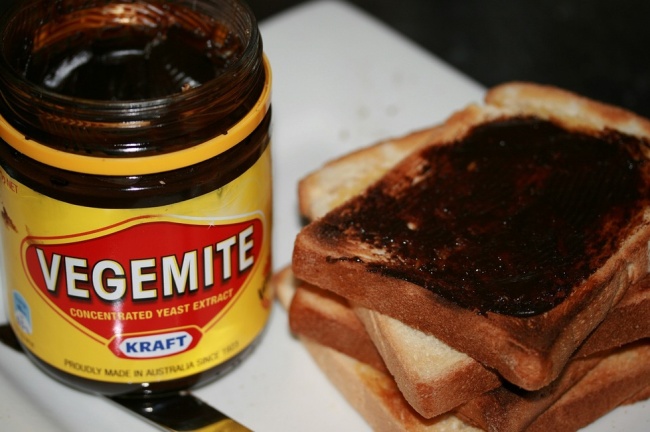
Posted on 01/31/2018 1:27:08 PM PST by Red Badger

We might sometimes talk about eating crap on a night in, but that’s nothing compared to the more literal crap future astronauts could well find themselves chowing down on. That’s thanks to researchers at Penn State University, who have been using a research grant from NASA to develop technology for breaking down solid and liquid waste, and transforming it into food that’s hygienic and safe for humans — albeit something you probably won’t be serving at a dinner party anytime soon. The resulting foodstuff is high in both protein and fat, and apparently not dissimilar to savory British sandwich spread, Marmite.
“This is not the typical research direction for my laboratory, but among other things we do work with unusual microorganisms,” Christopher House, professor of geosciences at Penn State, told Digital Trends. “In 2009, NASA had a call for proposals for educational research projects that advance the topic of space colonization. Lisa Steinberg, who is an environmental engineer, and I proposed to that call the general concept here of coupling anaerobic digestion to microbial growth of non-pathogenic microbes.”
The proof-of-concept system the Penn State researchers built involves sending human waste through a fixed-film, plug-through anaerobic reactor which converts the organic matter into methane and carbon dioxide. The reactor uses a plastic media with a high surface area-to-volume ratio, and is typically used in aquariums and ponds to treat ammonium from fish waste.
“In our reactor, this plastic media provided a surface for the bacteria to attach so the waste material could flow through the reactor and past these microbial biofilms, where the attached microbes would remove organic matter and other nutrients,” Steinberg told Digital Trends. “A special group of bacteria in the reactor, named methanogens, produce methane which we used to grow methylococcus capsulatus, a methane-consuming microbe. Using the gas from the anaerobic reactor allowed us to prevent the transfer of potential pathogens or other unwanted microbes into the reactor growing M. capsulatus.”
Sadly, the project is currently concluded and Steinberg says “there is nothing else planned,” although she noted that it could be picked up by another research team wanting to continue the work.
“Deep-space flight is really difficult with food production being one of many tough to tackle issues,” House concluded. “I am most excited by the concept that remarkable, and sometimes extreme, microorganisms might help make deep space flight more practical. Naturally, this paper is only a small step, and I think that we have not necessarily found the optimal solution with respect to which microbes are used and how.”
“Houston, it tastes a bit nutty.”
Soylent Brown is WHAT?
Talk about a sh!t sandwich!
You beat me to it.
At that point, you gotta really love being an astronaut, or you’re not going to make it.
We always called the Brits Sh*t eaters
I bet Tang will have more sales.
Sorry...didn’t mean to poop in your punch bowl :)

What happened to the old NASA that gave us Tang?
I remember how excited we were as kids for, ‘Space Sticks’ and dehydrated Ice Cream (Dad is an Engineer so we were all a bunch of Space Geeks.)
Man, this next generation is gonna get the Good Stuff!
*SNORT*
“Why is there corn in my peanut butter?”....................
I prefer to ride the spaceship with champagne and caviar on the menu, but that’s just me.....
Ironic that the topic of “News items used as a metaphor for a political party” appeared in an earlier thread today.
Space food sticks..
So that what was the colorful food cubes the dispensers provided the crew of Star Trek:TOS.
House and Senate Democrats should apply for astronaut training since they exist on a diet of those sandwiches already.

For those of you who have wondered where Marmite and Vegemite come from. Or who.
Disclaimer: Opinions posted on Free Republic are those of the individual posters and do not necessarily represent the opinion of Free Republic or its management. All materials posted herein are protected by copyright law and the exemption for fair use of copyrighted works.